#sclerotic ring
Text
You know what messes me up?

This dinosaur skeleton is incomplete. But, it doesn't look that way to us, because the parts it's missing are parts we don't have.

See how there are ribs on the bottom? Those are called gastralia. That's right, dinosaurs had ribs on their stomachs as well, and modern crocodiles and alligators still have them! (Also, notice that the ribs keep going to the hips instead of stopping above the waist. This is also true of modern birds, and why a bird can't have a concave stomach!)

Next, notice that ring floating in the center of the eye socket? That's called a sclerotic ring! Fish, reptiles, birds--with the exception of mammals (and, oddly enough, crocodilians), pretty much all modern vertebrates still have them! It's literally an eyeball bone. Afaik we haven't found a T-rex specimen with any intact, but since we've found them in other dinosaurs, it's very likely they had them too.
So, keep that in mind next time you see a dinosaur skeleton.
59K notes
·
View notes
Text
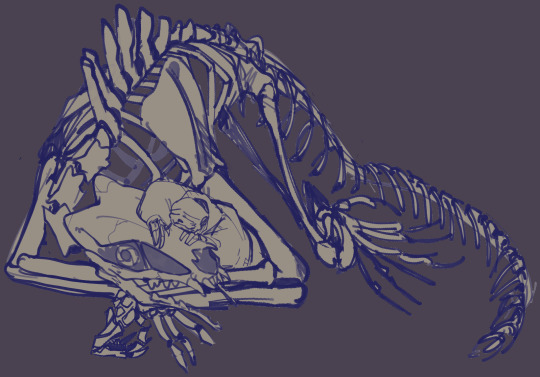
Fanart of @leshyleaf's bullet pattern birthday card AU, it's Suppper cute! check it out.
#bpbc au#bullet pattern birthday card au#undertale au#gahh I am such a fan of this papyrus design#he's Such a cutie#jbird's art#guhh. guhhh. my friend was like [haha d'you know this au? :)?] and I think?? I saw some of it#when it was first coming out#but than I forgot to keep up#and than I speed ran caughting up#and now I'm sick and ill and terribly obsessed#it's so cute :(#also I Really frankenstined togeather the papyrus' skeleton gahaha#his skull is verry doglike. but I coudnj't help myself w/ the sclerotic rings#and his hands are just. messsed up human ones. cus I Think I saw some art of papyrus as like. he's humanoid jus got some dog stuff added on#so I made sure he could stand bi-pedally [his feet are more bird like. cus I didn' wanna look up human feet and I already memorized birds]#the tail was just. is just a snake added on gahaha#sorry these tags are a MESS
96 notes
·
View notes
Text
Megatron's optics but the little white irises are blown WIDE
The reasons for why are up to you
#transformers prime#tfp Megatron#fun fact it's likely if not straight up canon that Cybertronians have structures like sclerotic rings#every vertebrate except mammals have them and they keep a thing's vision sharp#you know me and Cybertronian optics yeah yeah
6 notes
·
View notes
Note
transformers prime Starhawk looks like a BIRD-
I mean…..
Starhawk
10 notes
·
View notes
Text
having bones in my eyes would fix me
2 notes
·
View notes
Text
So apparently I have a chance of inheriting keratoconus, a degeneration of the cornea in the eye. This would explain why it's harder for me to see some things now. If I do get diagnosed with it my options are either advanced contacts, cornea transplant or LASER BEAMS TO EYEBALLLS WITH NO ANAESTHETIC (my sibling had the lasers, they're fine). Before anything happens though I'll probably get contacts. Not gonna lie though, I kinda want scleral contacts just so I can think to myself "I have bones in my eyeballs, just like my favourite dinosaur";
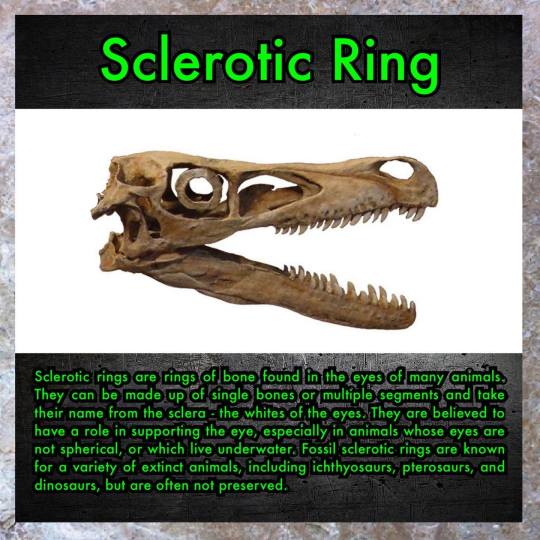
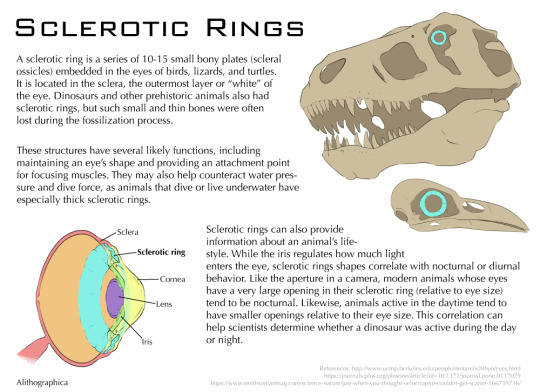
Unfortunately, the actual contacts are transparent, but it would so cool to have rock/bone coloured eyeballs. So yeah, a good incentive to set up my PayPal donation I guess.
#no graphic imagery#keratoconus#eye#eyeball#cornea#sclerotic rings#bones#fossils#medical#health#me orbs#scheduled post
0 notes
Text
A Curated List Of My Favorite Skeletons (and Skulls!)
We shall start, of course, with the obvious: Stringray!
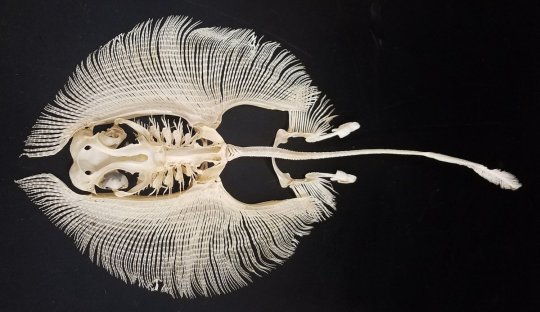
Followed neatly by pufferfish!
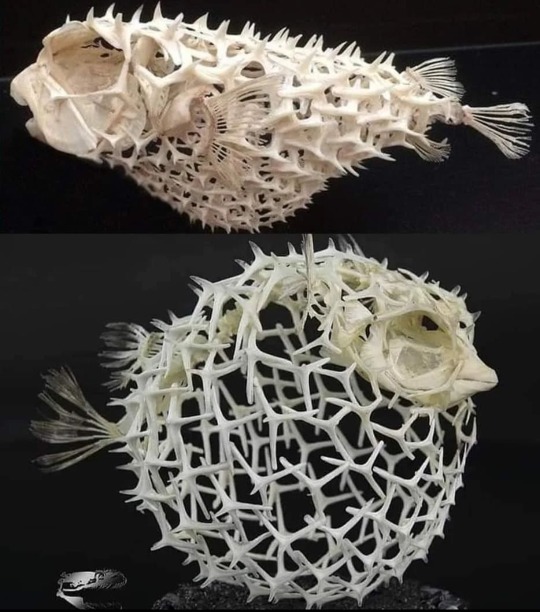
gila monster skull (shh they are sleeping)
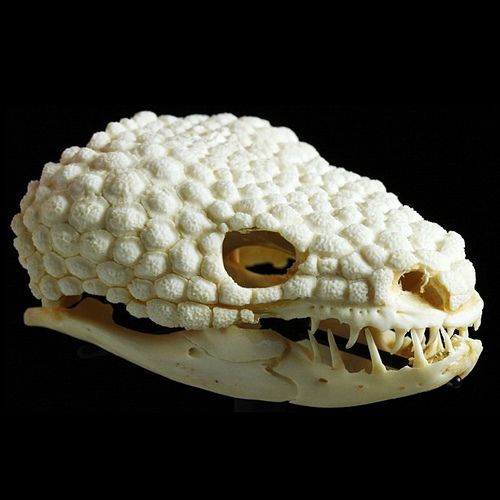
moving on to flamingos bc they have so little to work with but they stretch it so far
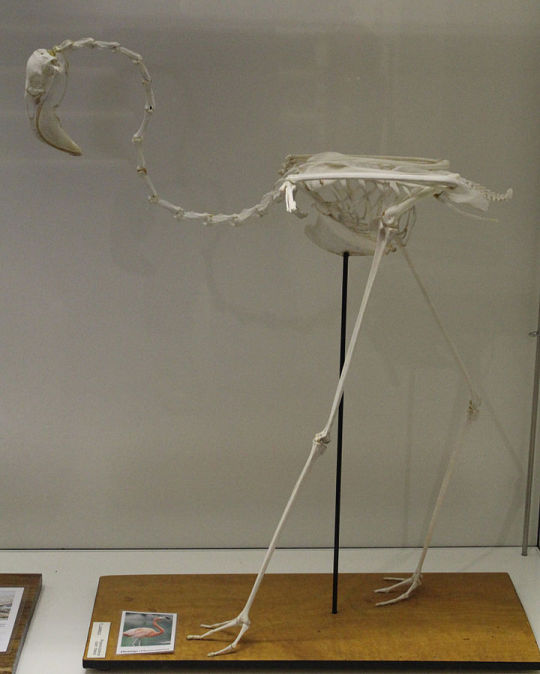
veiled chameleon skull (plus art by Elena Barbieri so you comprehend the importance of the sclerotic ring bone!) (bc some eyes have bones! some eyes have bones and that is so so valid)

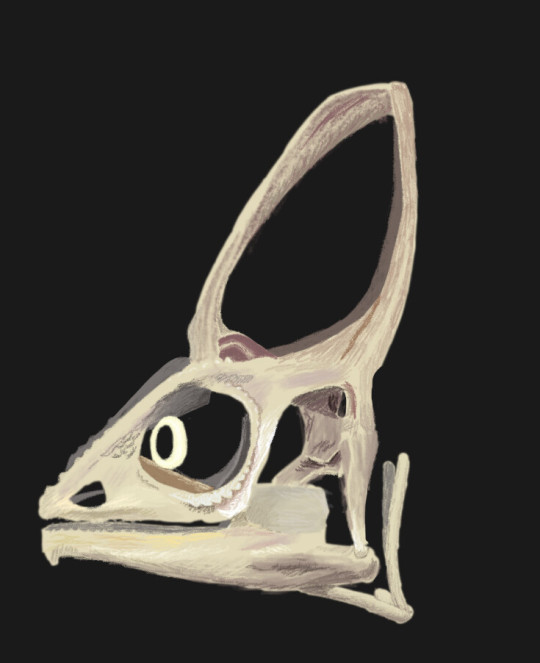
love us a good old-fashioned mole
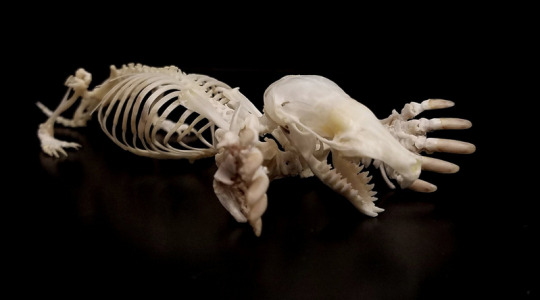
the tucan, always a fun classic
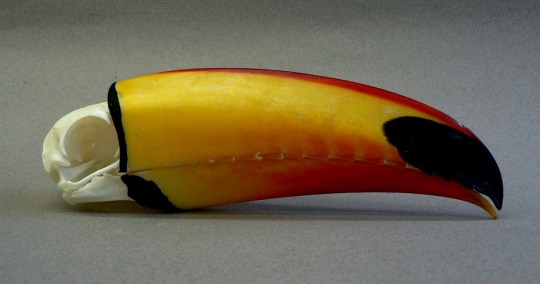
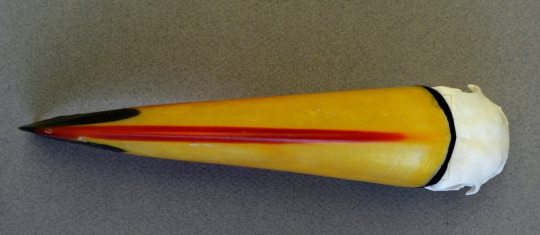
in conclusion, a few dainty gibbon skeletons to calm you soul, bc why the heck not <3



(yes the last one is a real vintage postcard sold in real Natural History Museum gift shops, before for some reason they reconsidered this marketing decision)
#bones#tw trypophobia#animal bones#skeletons#animal skeletons#skeletons my beloved#peace and love to planet earth
11K notes
·
View notes
Text
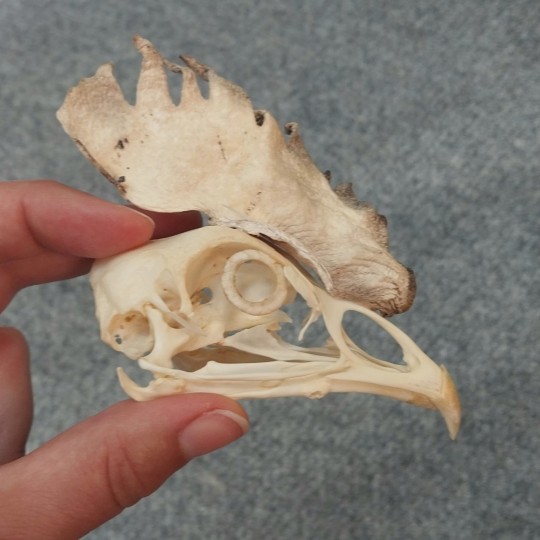

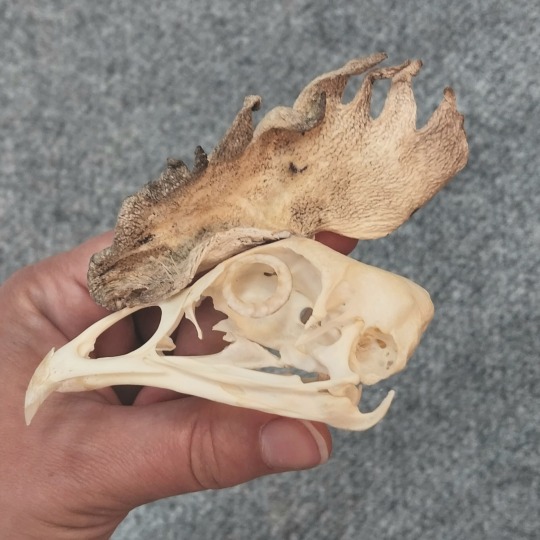

Rooster skull with its comb. The skull was beetle cleaned, degreased, and whitened with peroxide. The sclerotic rings were glued in place. The comb was formalin fixed and dried, then glued in place. A super cool specimen done for a good friend ❤️
#rooster skull#chicken skull#skull#vulture culture#animal skull#oddities#pacific remains#comb#mummified
582 notes
·
View notes
Text
Crystal Palace Field Trip Part 2: Walking With Victorian Dinosaurs
[Previously: the Permian and the Triassic]
The next part of the Crystal Palace Dinosaur trail depicts the Jurassic and Cretaceous periods. Most of the featured animals here are actually marine reptiles, but a few dinosaur species do make an appearance towards the end of this section.

Although there are supposed to be three Jurassic ichthyosaur statues here, only the big Temnodontosaurus platyodon could really be seen at the time of my visit. The two smaller Ichthyosaurus communis and Leptonectes tenuirostris were almost entirely hidden by the dense plant growth on the island.

Ichthyosaurs when fully visible vs currently obscured
Left side image by Nick Richards (CC BY SA 2.0)
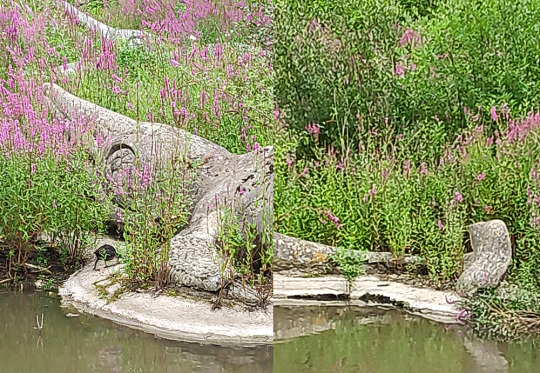
Head, flipper, and tail details of the Temnodontosaurus. A second ichthyosaur is just barely visible in the background.
Ichthyosaurs were already known from some very complete and well-preserved fossils in the 1850s, so a lot of the anatomy here still holds up fairly well even 170 years later. They even have an attempt at a tail fin despite no impressions of such a structure having been discovered yet! Some details are still noticeably wrong compared to modern knowledge, though, such as the unusual amount of shrinkwrapping on the sclerotic rings of the eyes and the bones of the flippers.

———

Arranged around the ichthyosaur, three different Jurassic plesiosaurs are also represented – “Plesiosaurus” macrocephalus with the especially sinuous neck on the left, Plesiosaurus dolichodeirus in the middle, and Thalassiodracon hawkinsi on the right.
They're all depicted here as amphibious and rather seal-like, hauling out onto the shore in the same manner as the ichthyosaurs. While good efforts for the time, we now know these animals were actually fully aquatic, that they had a lot more soft tissue bulking out their bodies, and that their necks were much less flexible.

———
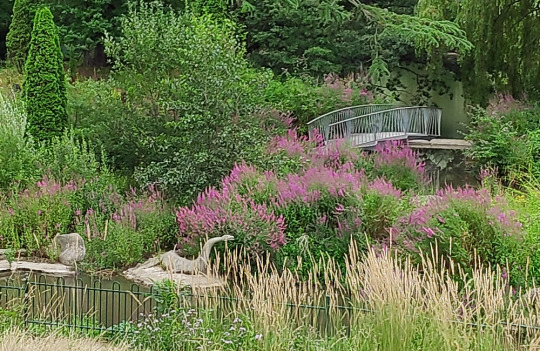
The recently-installed new pivot bridge is also visible here behind some of the marine reptiles.
———

Positioned to the left of the other marine reptiles, this partly-obscured pair of croc-like animals are teleosaurs (Teleosaurus cadomensis), a group of Jurassic semi-aquatic marine crocodylomorphs.

A better view of the two teleosaurs by MrsEllacott (CC BY-SA 4.0)
The Crystal Palace statues have the general proportions right, with long thin gharial-like snouts and fairly small limbs. But some things like the shape of the back of the head and the pattern of armored scutes are wrong, which is odd considering that those details were already well-known in the 1850s.

———
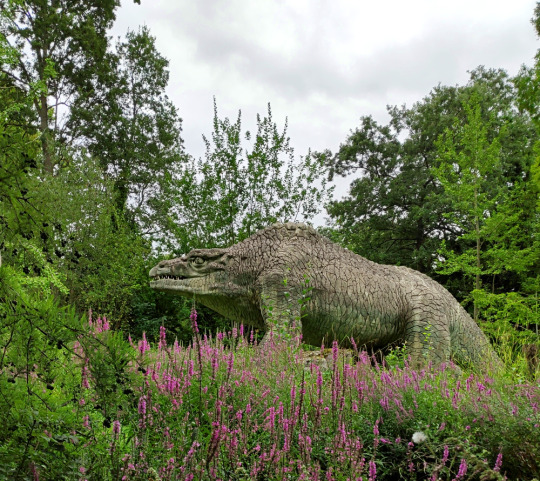
Finally we reach the first actual dinosaur, and one of the most iconic statues in the park: the Jurassic Megalosaurus!
Megalosaurus bucklandi was the very first non-avian dinosaur known to science, discovered in the 1820s almost twenty years before the term "dinosaur" was even coined.
At a time when only fragments of the full skeleton were known, and before any evidence of bipedalism had been found, the Crystal Palace rendition of Megalosaurus is a bulky quadrupedal reptile with a humped back and upright bear-like limbs. It's a surprisingly progressive interpretation for the period, giving the impression of an active mammal-like predator.
This statue suffered extensive damage to its snout in 2020, which was repaired a year later with a fiberglass "prosthesis".

———
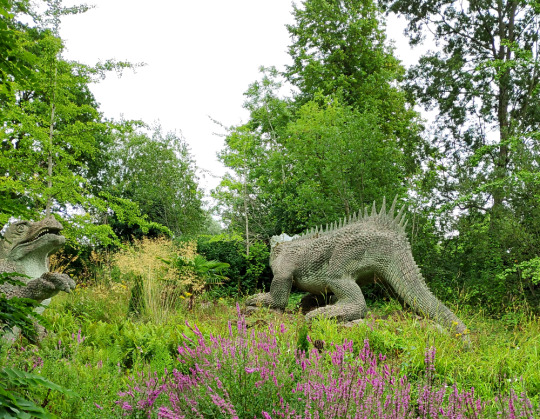
Reaching the Cretaceous period now, we find Hylaeosaurus (and one of the upcoming Iguanodon peeking in from the side).
Hylaeosaurus armatus was the first known ankylosaur, although much like the other dinosaurs here its life appearance was very poorly understood in the early days of paleontology. Considering how weird ankylosaurs would later turn out to be, the Crystal Palace depiction is a pretty good guess, showing a large heavy iguana-like quadruped with hoof-like claws and armored spiky scaly skin.
It's positioned facing away from viewers, so its face isn't very visible – but due to the head needing to be replaced with a fiberglass replica some years ago, the original can now be seen (and touched!) up close near the start of the trail.


———

Two pterosaurs (or "pterodactyles" according to the park signs) were also supposed to be just beyond the Hylaeosaurus, but plant growth had completely blocked any view of them.
Although these two statues are supposed to represent a Cretaceous species now known as Cimoliopterus cuvieri, they were probably actually modeled based on the much better known Jurassic-aged Pterodactylus antiquus.
A second set of pterosaur sculptures once stood near the teleosaurs, also based on Pterodactylus but supposed to represent a Jurassic species now known as Dolicorhamphus bucklandii. These statues went missing in the 1930s, and were eventually replaced with new fiberglass replicas in the early 2000s… only to be destroyed by vandalism just a few years later.
(The surviving pair near the Hylaeosaurus are apparently in a bit of disrepair these days, too, with the right one currently missing most of its jaws.)

Image by Ben Sutherland (CC BY 2.0)
The Crystal Palace pterosaurs weren't especially accurate even for the time, with heads much too small, swan-like necks, and bird-like wings that don't attach the membranes to the hindlimbs. Hair-like fuzz had been observed in pterosaur fossils in the 1830s, but these depictions are covered in large overlapping diamond-shaped scales due to Richard Owen's opinion that they should be scaly because they were reptiles.
But some details still hold up – the individual with folded wings is in a quadrupedal pose quite similar to modern interpretations, and the bird-like features give an overall impression of something more active and alert than the later barely-able-to-fly sluggish reptilian pterosaur depictions that would become common by the mid-20th century.

(Much like the statues themselves, the "modern" reconstruction above is based on Pterodactylus rather than Cimoliopterus)
———

The last actual dinosaurs on this dinosaur trail are the two Cretaceous Iguanodon sculptures. At the time of my visit they weren't easy to make out behind the overgrown trees, and only the back end of the standing individual was clearly visible.

Named only a year after Megalosaurus, Iguanodon was the second dinosaur ever discovered, and early reconstructions depicted it as a giant iguana-like lizard.
The Crystal Palace statues depict large bulky animals, one in an upright mammal-like stance and another reclining with one hand raised up. (This hand is usually resting on a cycad trunk, but that element appeared to be either missing or fallen over when I was there.)
Famously a New Year's dinner party was held in the body of the standing Iguanodon during its construction, although the accounts of how many people could actually fit inside it at once are probably slightly exaggerated.
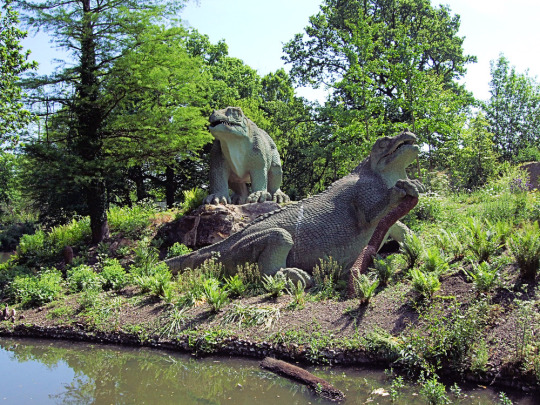
A clearer view by Jim Linwood (CC BY 2.0)
Considering that the skull of Iguanodon wasn't actually known at the time of these sculpture's creation, the head shape with a beak at the front of the jaws is actually an excellent guess. The only major issue was the nose horn, which was an understandable mistake when something as strange as a giant thumb spike had never been seen in any known animal before.

(The fossils the Crystal Palace statues are based on are actually now classified as Mantellisaurus atherfieldensis, but the "modern" reconstruction above depicts the chunkier Iguanodon bernissartensis.)
———
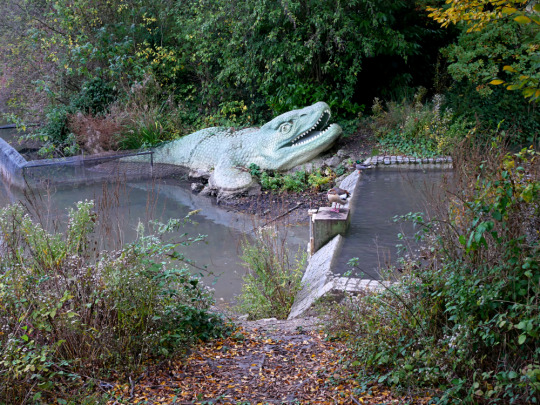
Image by Doyle of London (CC BY-SA 4.0)
I also wasn't able to spot the Cretaceous mosasaur on the other side of the island due to heavy foliage obscuring the view.
Depicting Mosasaurus hoffmannii, this model consists of only the front half of the animal lurking at the water's edge. It's unclear whether this partial reconstruction is due to uncertainty about the full appearance, or just a result of money and time running out during its creation.
The head is boxier than modern depictions, and the scales are too large, but the monitor-lizard like features and paddle-shaped flippers are still pretty close to our current understanding of these marine reptiles. It even apparently has the correct palatal teeth!

Next time: the final Cenozoic section!
#field trip!#crystal palace dinosaurs#retrosaurs#i love them your honor#crystal palace park#crystal palace#ichthyosaur#plesiosaur#teleosaurus#crocodylomorpha#marine reptile#megalosaurus#theropod#hylaeosaurus#ankylosaur#iguanodon#ornithopoda#ornithischia#dinosaur#pterodactyle#pterodactylus#pterosaur#mosasaurus#mosasaur#paleontology#vintage paleoart#art
445 notes
·
View notes
Note
Why do some fish have bones in their eyes?
Great question! I assume you're referring to the sclerotic ring, which is present in many groups of animals, including birds, reptiles, amphibians, and fish, as well as the fossils of many dinosaurs.
Their primary function is to support the eye and help it keep its shape- this is especially important for animals which live in very low or very high pressure environments, such as the bottom of the ocean.
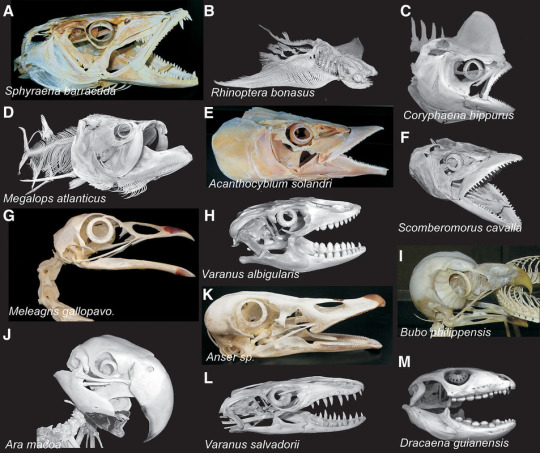
(Image: The skulls and x-rays of a variety of species, all of which display a sclerotic ring, by Tamara Anne Franz-Odendaal)
Franz-Odendaal's paper on the subject is quite interesting, as it dives into the evolution and function of the scleral ring.
741 notes
·
View notes
Text
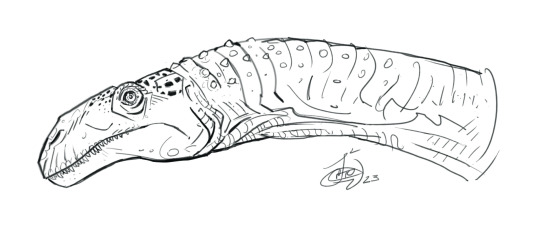
A prosauropod giving me the side-eye. Well technically they are always giving the side-eye; if you've ever spent some time around one, you'll notice that the eyeball never turns in its socket. Most critters can't; that's why you see little to no whites of the eyes in most non-mammal creatures. They have this wreath of small bones called the sclerotic ring embedded in the eye that locks them in place. Predators are usually locked pointing more to the front, prey usually locked pointing more to the side. If a creature with sclerotic rings wants to change their angle of view, they've got to rotate their neck. So yeah; that's why the perpetual side-eye expression.
Even though Prosauropods had a mixed diet of meat and plants, they always seem to me to be giving more of a side-eye than other prey critters. It's something about their expression; they always seem stressed out. And boy do they startle easily, like they're wired up on caffeine and spooky bedtime stories. Which is odd, because the first coffee shop wouldn't show up for another 210 million years.
148 notes
·
View notes
Text
gaster blasters shluld have sclerotic rings in their eyes like hawks
669 notes
·
View notes
Text
Fossil Friday: Six Foot Turkey
Remember that kid from Jurassic Park? The good one not the weird monster movies.
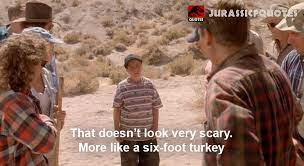
First, that kid has clearly never met a living turkey because they are huge and mean. They are often used to protect chicken coops.

Anyway, that is probably the most accurate scene involving Velociraptor in the whole franchise. The dinosaur really is about 6ft long and the size of a turkey.

Velociraptor belongs to the dromaeosaur family, of which the largest ones are found in North America (Utahraptor, Deinonychus). This family actually has a lot of similar bone structures to modern-day turkeys and others aves. The most obvious being the feet. Yes, dromaeosaurs have a specialized toe but like most ground-dwelling birds, he had three toes.


They also have a fairly similar wrist structure too.

Velociraptor also has a sclerotic ring which is a ring of bones around the eye to hold it in place. This is why birds, fish, amphibians, and reptiles move their whole head and not just their eyeballs: they can't.


And finally, they also possess a wishbone!

Hope you all had a good Thanksgiving!
77 notes
·
View notes
Photo

Name: Wind-Up Hopping Eyeball
Debut: Real Life
Wind-Up Hopping Eyeball is a classic creature, I think! In fictional worlds, Bat-Winged Eyeball is quite a classic creature, but that is not feasible in the real world. Eyeball With Feet, however, is! It is real, it is in our world, it hops among us! Welcome it into your home!
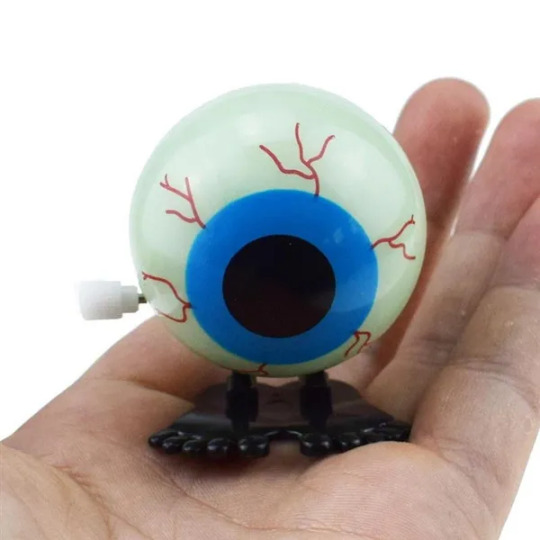
Yes, the humble Eyeball With Feet is a beloved little creature. Hold it gently in your palm. Usually, human feet are off-putting, really the least aesthetically pleasing of nearly any animal, but somehow, an eyeball pulls it off! There is just something so earnest about the combination of a big ol’ eyeball with strangely realistically-shaped feet. It is such a little animal, inquisitive about the world, it wants to see as much as it can! Take it for a world tour! Take it to the zoo, the puppet theater, the Aurora Borealis, all the wonderful sights!

Evidently, however, back in 1999, they had not quite figured out the feet thing. So this one hops around on just a plastic slab, almost like a surfboard or a single ski! This one also has some kind of... sclerotic ring? Wow! This is no human eye! Unlike the modern ones with feet growing out of them, which are real human eyes!

There are, in fact, many members of the order Winduphoppingeyeballiformes, some more strangely derived than others! Here we have a more basal one that never had the need to evolve away from Flesh, but DID need to adapt by moving its eyelashes to the surface of the eyeball itself! If this creature could not blink and have its eyelashes still sticking out from between its eyelids, it would Die.

You already know that Wind-Up Hopping Eyeball is here to Hop! And it needs YOUR help! This poor critter is proof that there IS a God, and that He is malevolent. Wind-Up Hopping Eyeballs, went extinct in the wild soon after they spontaneously manifested, and only survive thanks to the humans kind enough to take them in and wind up their twisty-wisties to get them hopping. Captive breeding programs HAVE been successful, though with no plans to return them to the wild, where they would once again be doomed on their own with nobody to twist them. They sound more like a little toy than a creature when it’s put that way, but whatever. The efforts to upkeep Wind-Up Hopping Eyeball populations have taken a toll on the efforts to save other endangered species, but it’s ok! Scientists have proven that Wind-Up Hopping Eyeball is the most important animal, so don’t worry!

I hope you can See why Wind-Up Hopping Eyeball is so special! Hee hee! If it had a signature laugh, it might sound like “see hee hee”!
#wind up hopping eyeball#eyeball#toys#not mario#not even video games#real life#real animals#hee hee#maybe someone will get pranked by that one#funky friday#mod chikako#unreality#scopophobia#tw scopophobia
148 notes
·
View notes
Text

I did a quick doodle of the bird man, no sketch just started drawing while talking to my friend about bird skulls. (Sclerotic rings are weird)
39 notes
·
View notes
Text
Owls
Owls don’t have eyeballs. They have eyes of course, but not spherical in shape like you or me, but more tube like. These tube like eyes are held rigidly in place by bones called sclerotic rings. Because of this, owls have to move their entire head to get a good look around since their eyes are held in place. However, their eyes are not totally immovable, but only so slightly that the term “nearly immobile” can be applied. To combat this, they adapted the ability we all know and love to move their head 270 degrees.
#owl#owls#animal fact#animal facts#fun animal fact#fun animal facts#fun fact#fun facts#fact#facts#zoology#birds#animal#animals
18 notes
·
View notes